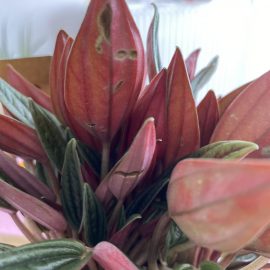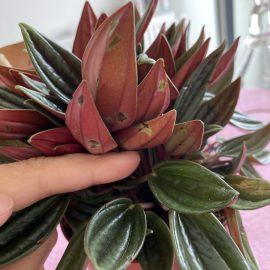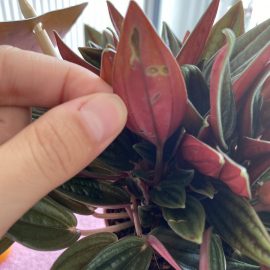Peperomia, plant care and growing guide
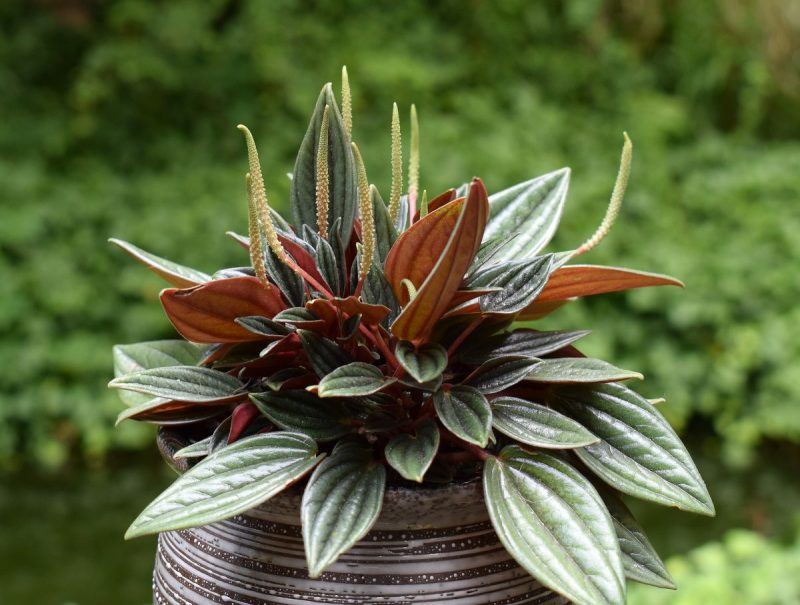
Peperomia is a genus that includes over 1000 species of plants native to tropical and subtropical areas. Some of these species are also found as ornamental indoor plants, due to their unusual foliage.
Peperomia generally has oval, fleshy leaves with smooth or textured edges. Depending on the species, they can be variously colored: green, red, purple, gray and can be variegated, mottled or simple, large or small. The flowers are clustered in the shape of a spike, they are long and narrow, without ornamental value. In indoor conditions, Peperomia blooms very rarely.
Peperomia – Species and varieties
- Peperomia obtusifolia: it has smooth, shiny, green leaves. Some plants can have variegated leaves. It can reach a height of 30 cm, having a more compact appearance;
- Peperomia argyreia: it has oval, glossy, green leaves, on the surface of which gray/silver stripes can be observed.
- Peperomia clusiifolia: the leaves are oval, with a green and cream-coloured center, while the edge is red or pink. They reach a height of 30 cm and have the appearance of a bush;
- Peperomia caperata: it stands out for its corrugated/wrinkled, velvety leaves. Some varieties have leaves with a burgundy tint, and others have a gray-green shade;
- Peperomia rotundifolia: it has small, oval, jade-green leaves that grow on either side of the stem. It can be grown in hanging planters or as a vertical plant.
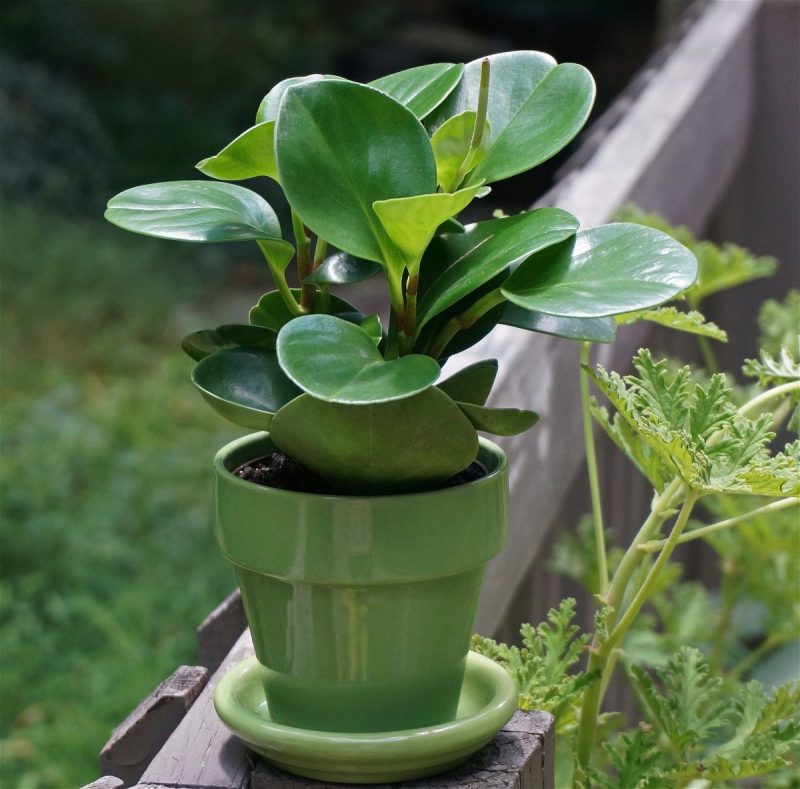
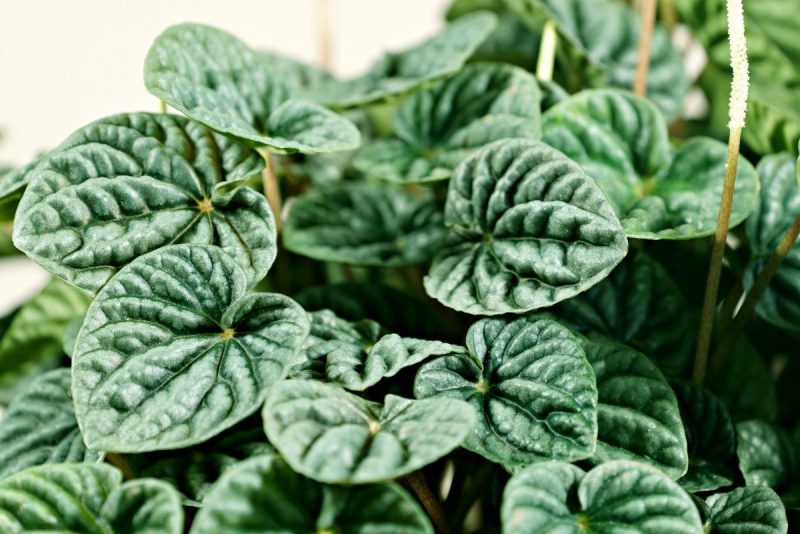
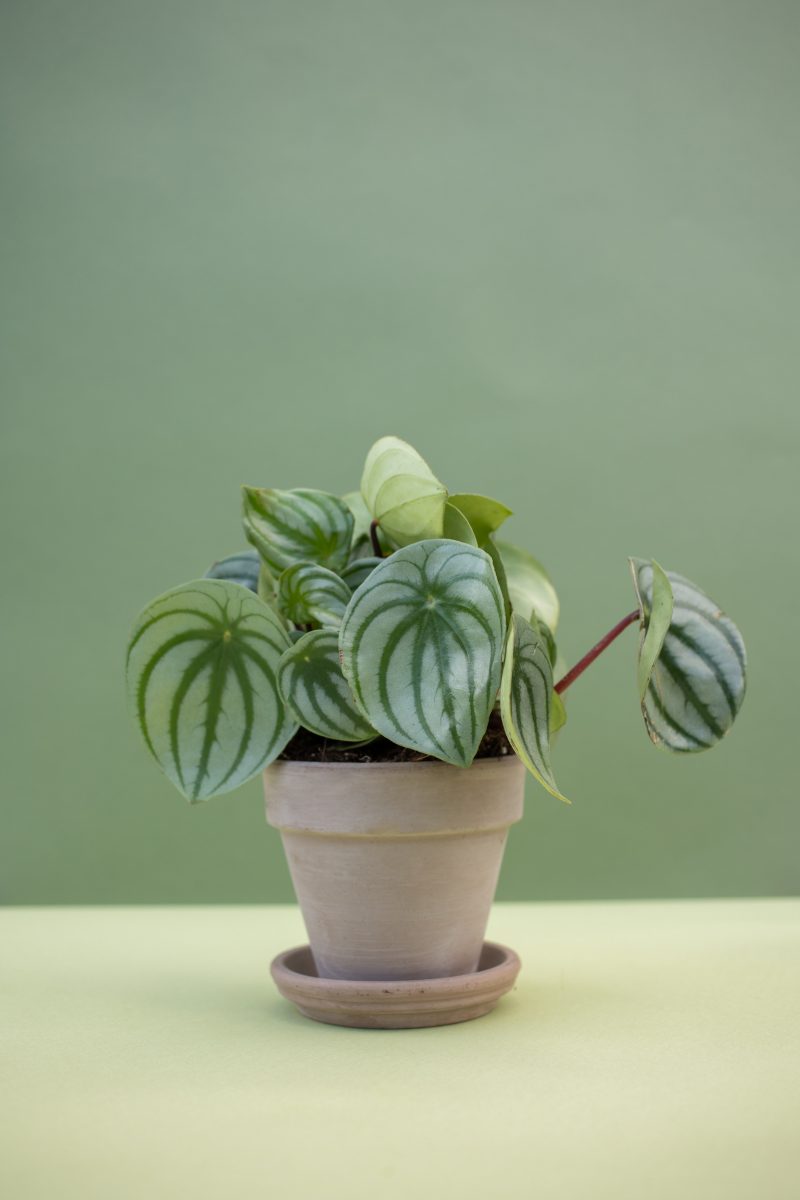
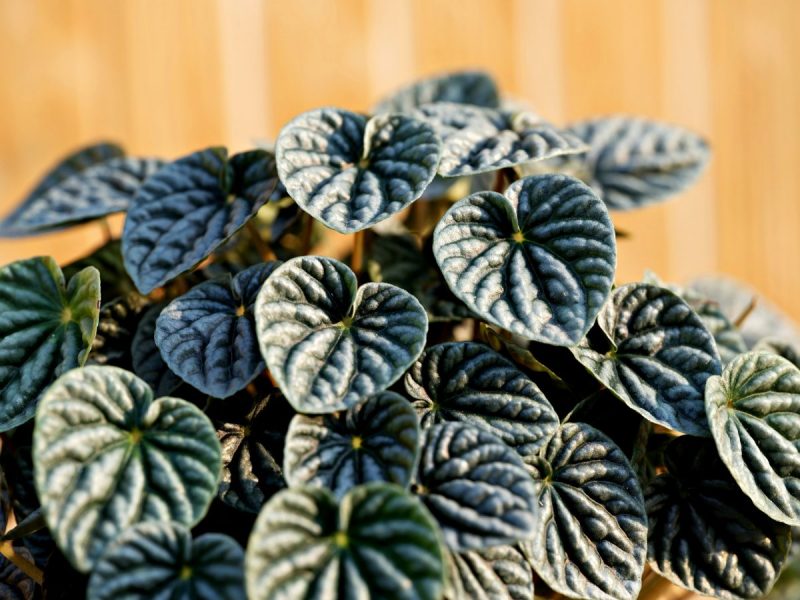
Environmental conditions
Light. Peperomia prefers places with medium to high brightness, but away from direct sunlight (it can cause burns). Insufficient light causes slower growth, a smaller number of leaves, and the foliage may lose its ornamental qualities.
Temperature. It does not have high demands in terms of temperature. It grows and develops well at an average temperature. However, it is not recommended to place the plants near heating/cooling systems or in places where temperature fluctuations or drafts may occur.
Humidity. Being a tropical plant, Peperomia prefers a slightly high atmospheric humidity. If the air is dry, it is recommended to regularly spray the leaves with non-calcareous water or place the flowerpot on a tray with wet gravel.
Substrate. It prefers a light, airy substrate that allows a good water drainage. You can use an ordinary substrate, but which should be coarse and loose. It is important that the flowerpot has drainage holes, to avoid the water getting stuck at the root level.
Recommended products
-
You can find products on a different store
Change Store -
You can find products on a different store
Change Store -
You can find products on a different store
Change Store -
You can find products on a different store
Change Store -
You can find products on a different store
Change Store -
You can find products on a different store
Change Store -
You can find products on a different store
Change Store -
You can find products on a different store
Change Store -
You can find products on a different store
Change Store -
You can find products on a different store
Change Store -
You can find products on a different store
Change Store -
You can find products on a different store
Change Store -
You can find products on a different store
Change Store -
You can find products on a different store
Change Store -
You can find products on a different store
Change Store -
You can find products on a different store
Change Store -
You can find products on a different store
Change Store -
You can find products on a different store
Change Store -
You can find products on a different store
Change Store -
You can find products on a different store
Change Store -
You can find products on a different store
Change Store -
You can find products on a different store
Change Store -
You can find products on a different store
Change Store -
You can find products on a different store
Change Store
Peperomia – Care
Watering. Most species of Peperomia have thick leaves, similar to succulents, which can retain water. Therefore, they do not require frequent watering to maintain their vigor and watering should be done moderately, letting the substrate dry before watering again. A soaked substrate can lead to root rot.
Fertilizing. It can be fertilized during the vegetative growth period, once or twice a month, using specific fertilizers for decorative plants.
Recommended products
-
You can find products on a different store
Change Store -
You can find products on a different store
Change Store -
You can find products on a different store
Change Store -
You can find products on a different store
Change Store -
You can find products on a different store
Change Store -
You can find products on a different store
Change Store -
You can find products on a different store
Change Store -
You can find products on a different store
Change Store -
You can find products on a different store
Change Store -
You can find products on a different store
Change Store -
You can find products on a different store
Change Store -
You can find products on a different store
Change Store -
You can find products on a different store
Change Store -
You can find products on a different store
Change Store -
You can find products on a different store
Change Store -
You can find products on a different store
Change Store -
You can find products on a different store
Change Store -
You can find products on a different store
Change Store -
You can find products on a different store
Change Store -
You can find products on a different store
Change Store -
You can find products on a different store
Change Store -
You can find products on a different store
Change Store -
You can find products on a different store
Change Store -
You can find products on a different store
Change Store
Transplanting. Having a relatively slow growth rate, Peperomia does not require to be transplanted frequently. When transplanting is necessary (the roots come out through the drainage holes), it can be moved into a large flowerpot, using a fresh substrate.
Propagation. It can be propagated in the spring, by stem cuttings or top cuttings. They will be rooted in containers with water or directly in the substrate.
Recommended products
-
You can find products on a different store
Change Store -
You can find products on a different store
Change Store -
You can find products on a different store
Change Store -
You can find products on a different store
Change Store -
You can find products on a different store
Change Store -
You can find products on a different store
Change Store -
You can find products on a different store
Change Store -
You can find products on a different store
Change Store -
You can find products on a different store
Change Store -
You can find products on a different store
Change Store -
You can find products on a different store
Change Store -
You can find products on a different store
Change Store -
You can find products on a different store
Change Store -
You can find products on a different store
Change Store -
You can find products on a different store
Change Store -
You can find products on a different store
Change Store -
You can find products on a different store
Change Store -
You can find products on a different store
Change Store -
You can find products on a different store
Change Store -
You can find products on a different store
Change Store -
You can find products on a different store
Change Store -
You can find products on a different store
Change Store -
You can find products on a different store
Change Store -
You can find products on a different store
Change Store
Diseases and pests
Among the pests, the most common are: wooly apple aphids, aphids, thrips and mites. At the same time, Peperomia species are prone to root rot. To avoid this, we recommend moderate watering and the use of a suitable flowerpot (pots that are too large will retain moisture for a longer time in the roots area).
Additionally:
- Peperomia species are not toxic to pets;
- The genus Peperomia is part of the pepper family – Piperaceae, but the plants of this genus are not intended for consumption;
- Yellowing, followed by falling leaves, can be an indicator that the plant has been watered too much.














































































































































































































































































































































































































































